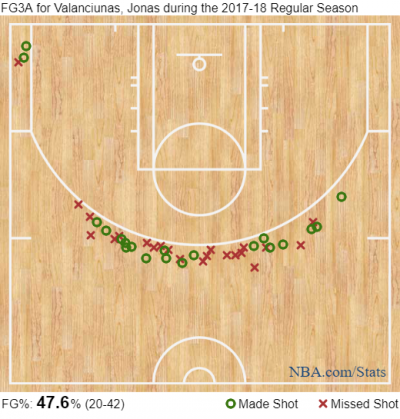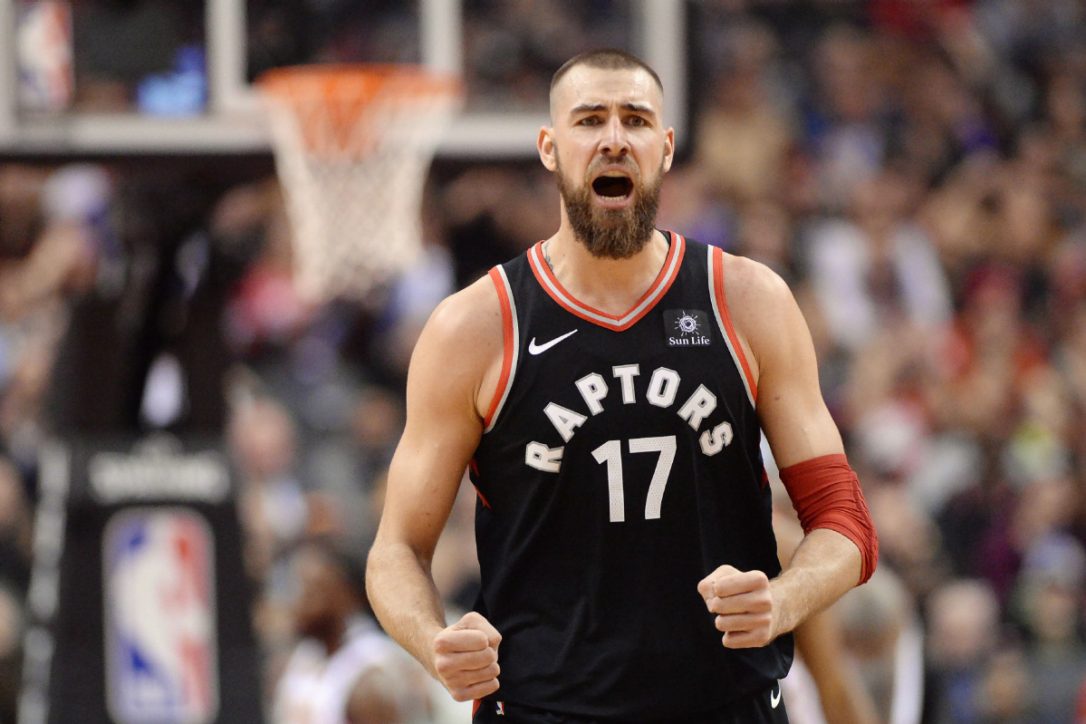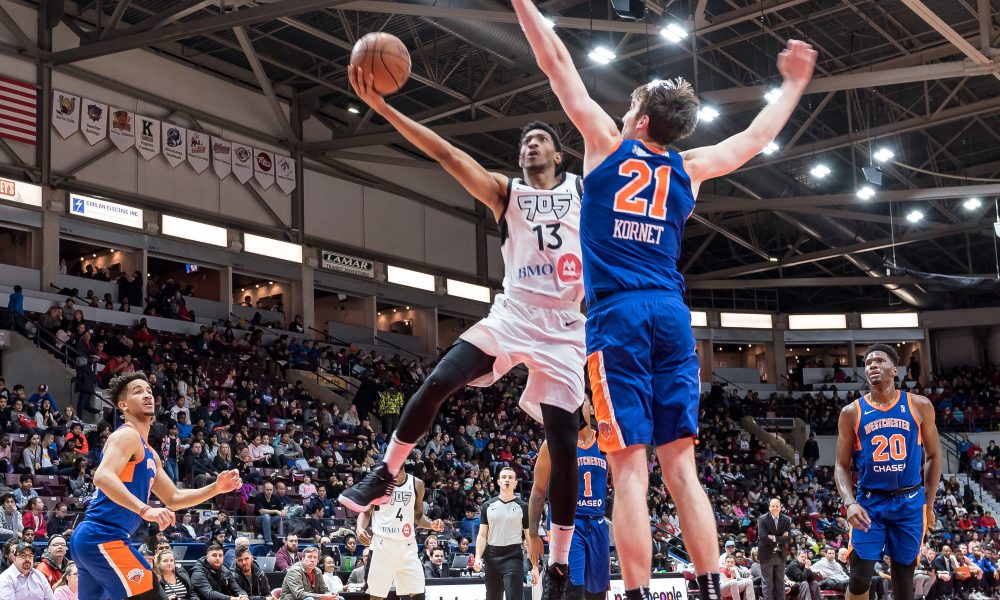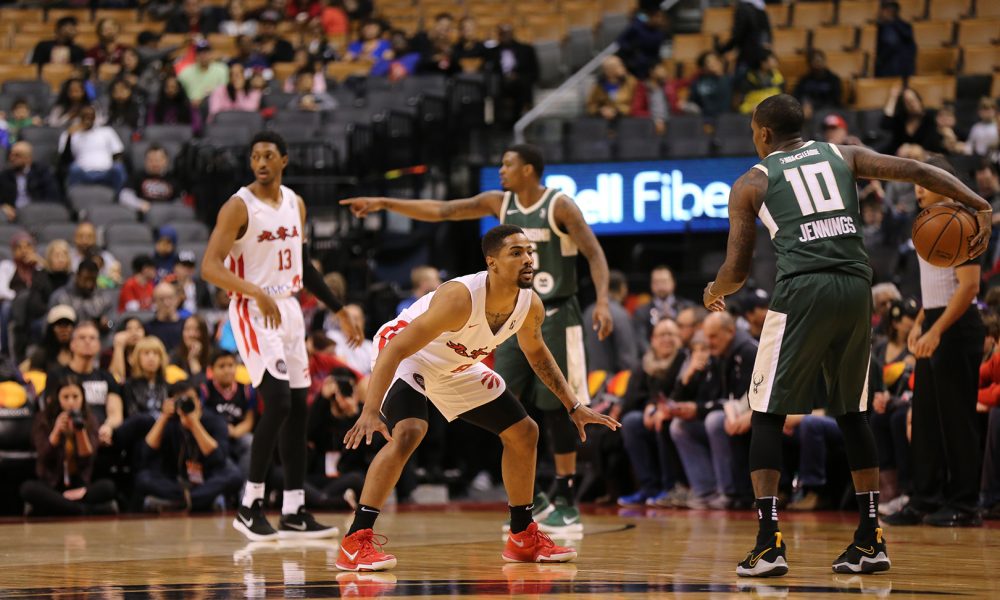Rarely have we seen a Raptor player as polarizing as Jonas Valanciunas. Especially in recent years, with the NBA game trending the way it is, the nightly JV watch has become a bit of a divisive issue amongst the Raptors fan base with the “JV Hive” staunchly defending the 6th year pro and others claiming that the dude doesn’t really belong in the NBA game anymore. But, as the season has progressed so far, we’ve seen some sides of JV we thought we might never see, and it’s important to re-calibrate our expectations.
The 2016 NBA Playoffs was an all-time high for the Toronto Raptors franchise. On the biggest of stages, the Raptors, a team that couldn’t even boast a 7-game playoff series win in its history, were shining as bright as ever. And while Kyle Lowry and DeMar DeRozan were being criticized for their historically inconsistent shooting at the time, the most important player on the court during so many critical junctures was none other than Jonas Valanciunas. Amidst the offensive struggles, and in the grind that is the NBA playoffs…the guy imposed his will on both the Indiana Pacers and Miami Heat in ways that we couldn’t even imagine. By dominating the offensive and defensive glass, JV played with a tenacity that seemed to be the start of something special. But an ankle injury hit at the worst of times (Game 3 against the Miami Heat in the second round), and things halted to a stop.
So, as we entered Training Camp in the 2016/2017 season, rightfully so, JV coming into his own as was a key talking point. But many still continued to question if he had the mental framework, the basketball IQ and the overall playing style that would be conducive to solid play on both ends of the floor. And while the big man’s numbers weren’t bad at all last year, with rebounding numbers (9.5 boards a game) at a career high level, those same reasons fans doubted JV, were the same reasons he became unplayable in the playoffs. Up against the size, length and athleticism of the Milwaukee Bucks, as well as the sublime shooting of the playoff Cavaliers, JV just didn’t fit. His low-post-heavy offense wasn’t efficient enough, the pick-and-roll defense was disastrous, and the overall playing style was just too…slow.
And then came the culture reset. In a sweeping move by the Raptors front office and coaching staff, the offense became completely overhauled, with passing and three-point shooting becoming a focus. In our minds, most of us were thinking that this spelled the end of JV…right? And while there have been ups and downs early in the year, so far, the answer has been a resounding no.
In the past 15 games, we’ve seen some encouraging signs from JV to say the least. In just over 25 minutes a game, Valanciunas is averaging almost 14 points a game on over 62% from the field, 59% from beyond the arc (on 15 attempts), and even 1.8 assists a game. And while most people would’ve thought this team will be closing games with just Ibaka at the 5, we’ve started to see JV figure in more in closing lineups.
All of this a pretty significant improvement for the much-maligned big man, who’s biggest improvement of late seems to be his ability to pass out of trouble, and make better reads on offensive possessions. There was no better example of this than on Friday night against the Bucks:
With the sideline out-of-bounds play drawn up for CJ Miles to receive a hand-off from JV at the three-point line off a set screen, he quickly sees that he’s out of position for the screen and Jason Terry will close in on it. Instead of simply handing the ball off to CJ, which would’ve likely resulted in a tough shot off the dribble with a defender in close proximity or a late pass, JV recognizes the open lane and sees that with only Jon Henson to beat on his way to the basket, it was his time to score. This is a level of awareness we haven’t really seen from Jonas in the past, and if he can get this head into more plays just like he did here, there’s no telling how impactful he can be.
Defensively, Jonas has shown glimpses of improvement as well. The eye-test has certainly looked better than in previous years, but the numbers seem to translate as well. We’ve seen a boost in defensive rating when Jonas is on the floor (allowing the fewest points-per-100-possessions in his career), as well as the highest defensive rebounding percentage we’ve seen in his career (at over 30%). Some of that is muddled by the fact that the Raptors are generally a better team defensively even without JV in the equation (not surprising given the increased minutes from guys like OG, Siakam, and Poeltl), but that’s still excellent news. It means his defensive shortcomings matter less, and the defensive rebounding becomes a pronounced asset. And for a team that’s already struggling closing defensive possessions (the Raptors rank 18th in the league in defensive rebounding percentage), Jonas’ ability to clean the glass will become incredibly important as games become more important.
For those who think Jonas can’t really shoot, well…you’re probably right. He’s such a unique player right now in the NBA since the only reason he’s shooting so well from beyond the arc, is because nobody thinks he can shoot. The long distance shot is still a gimmick right now, but it’s serving a purpose. And the numbers right now are saying: if you’re open, shoot it.


It has been an overall willingness from JV that has allowed him to turn a bit of a corner of late. Combined with the three point shooting, which now accounts for over 10% of his field goal attempts, he’s also reduced the percentage of his shots that come from mid-range 2’s (shots between 10 and 16 feet). That means that Dwane Casey’s early-season mantra of only shooting 3’s or high percentage 2’s has resonated with JV at least a little. Rather than deploying those ineffective pump fakes or taking contested mid-range jumpers, he’s shown some offensive creativity by shooting from beyond the arc, and even passing the ball more (his assist percentage has also increased by more than 3% since last year). That means he’s become more of a willing passer once he’s fed the ball, something we’ve all wanted to see from him for a long time. A 7.2% assist percentage isn’t exactly Steve Nash or John Stockton-esque, but the improvement from all of his earlier seasons at 5% or lower means that at least the intention seems to be changing, and that’s a good sign.
But, obviously, the biggest test for Valanciunas will be in a couple of months. After having the kind of impact he had in the 2016 playoffs, and the disappointment that followed in the 2017 playoffs, the true test of whether JV’s game really has adapted to the Raptors’ more modern style is yet to come. Who knows – against the best of Eastern Conference, and potentially even in the NBA Finals, the new and improved Jonas Valanciunas might be just what the Doctor ordered.




